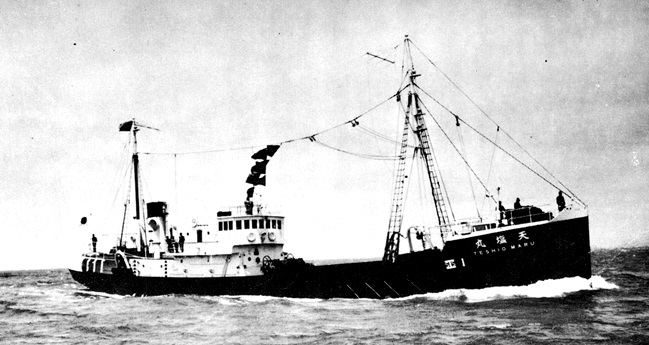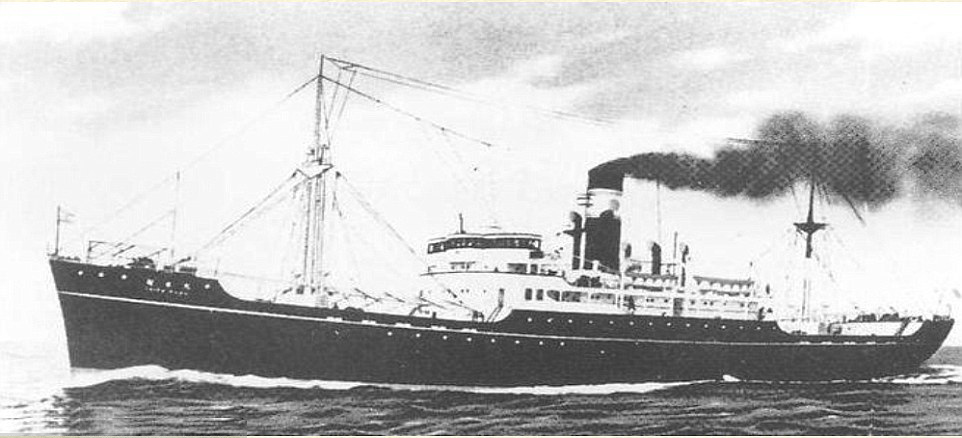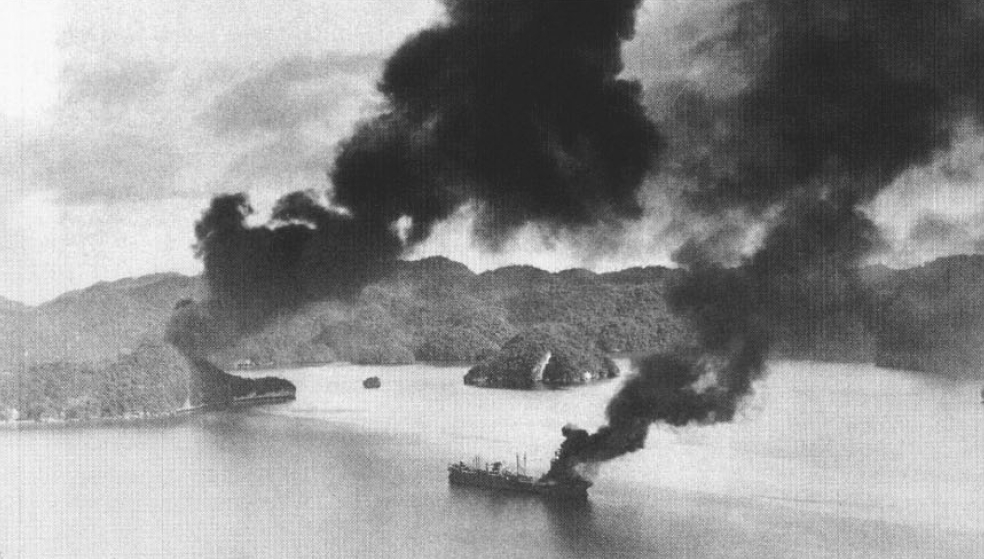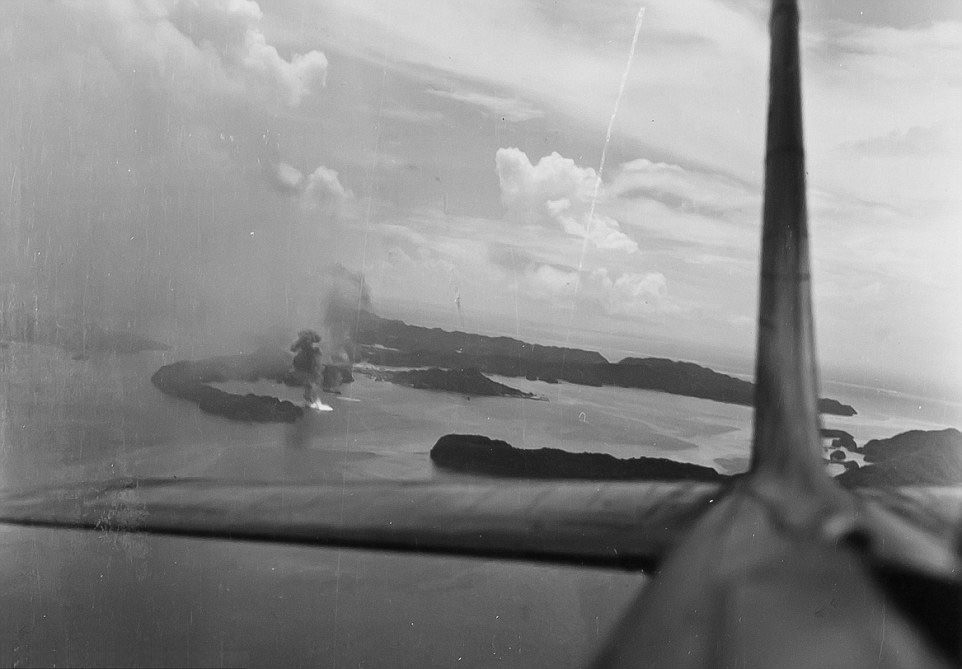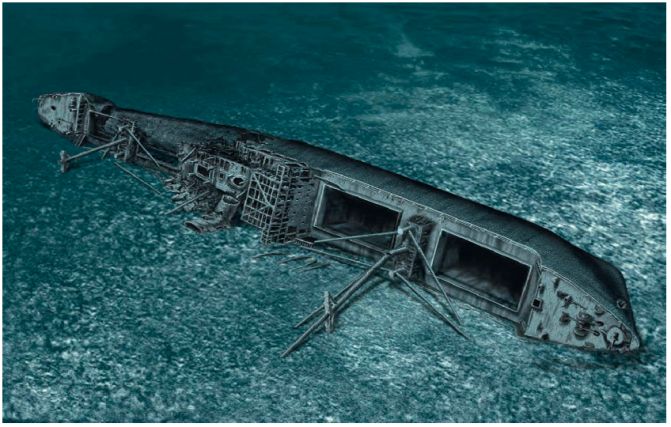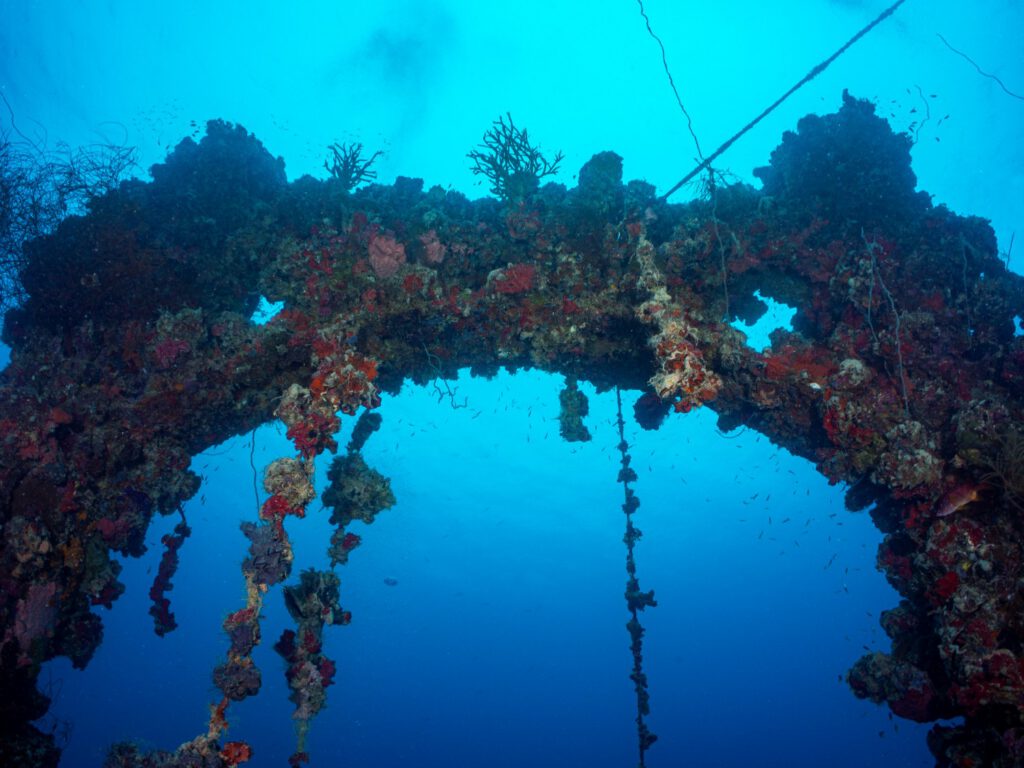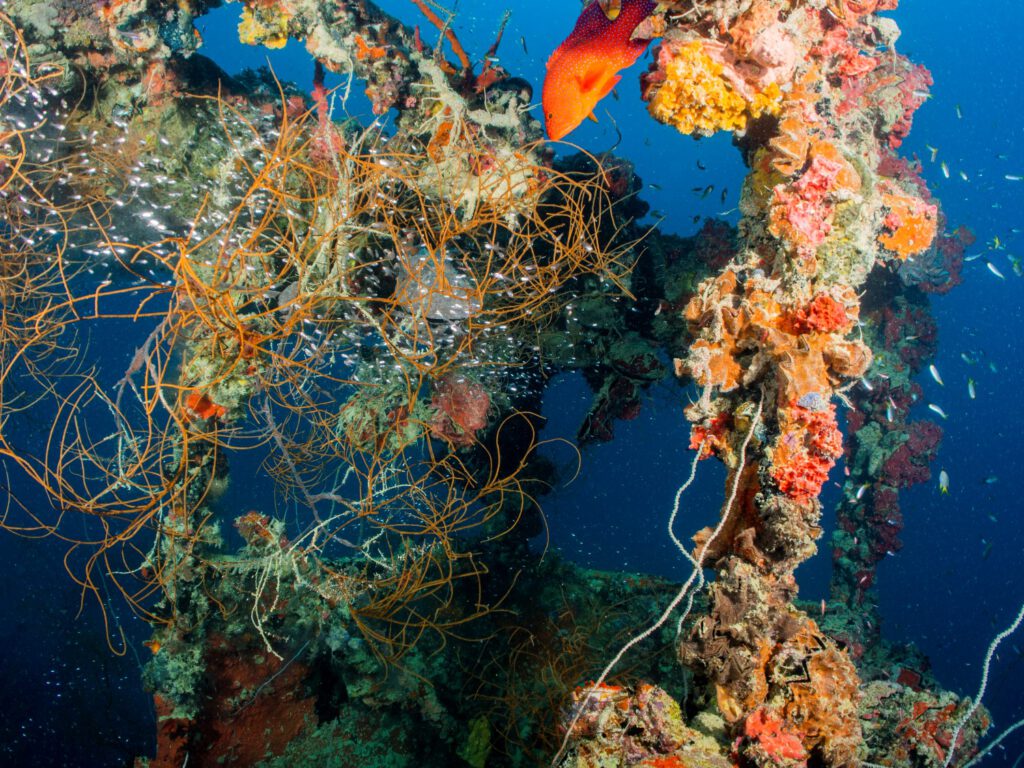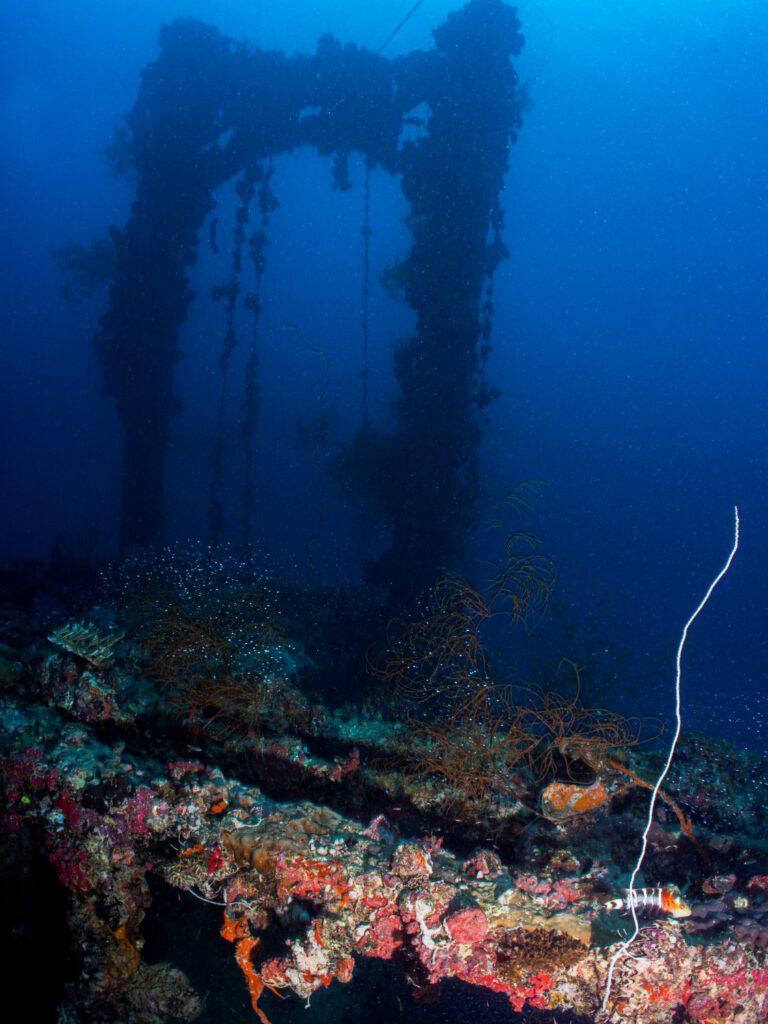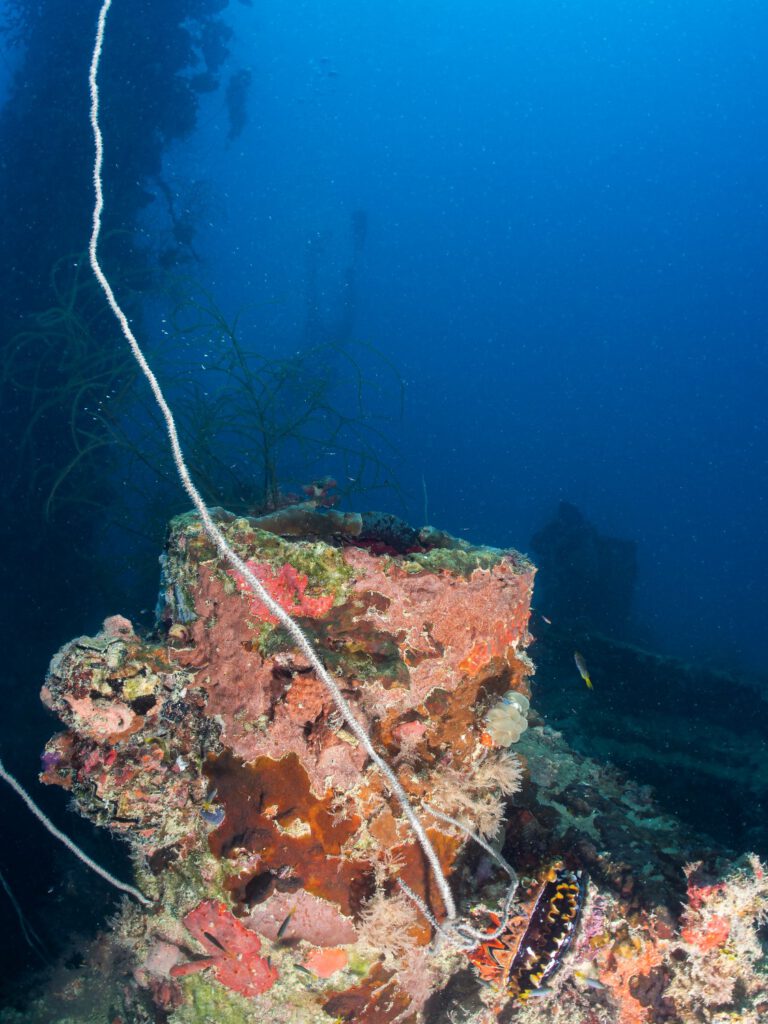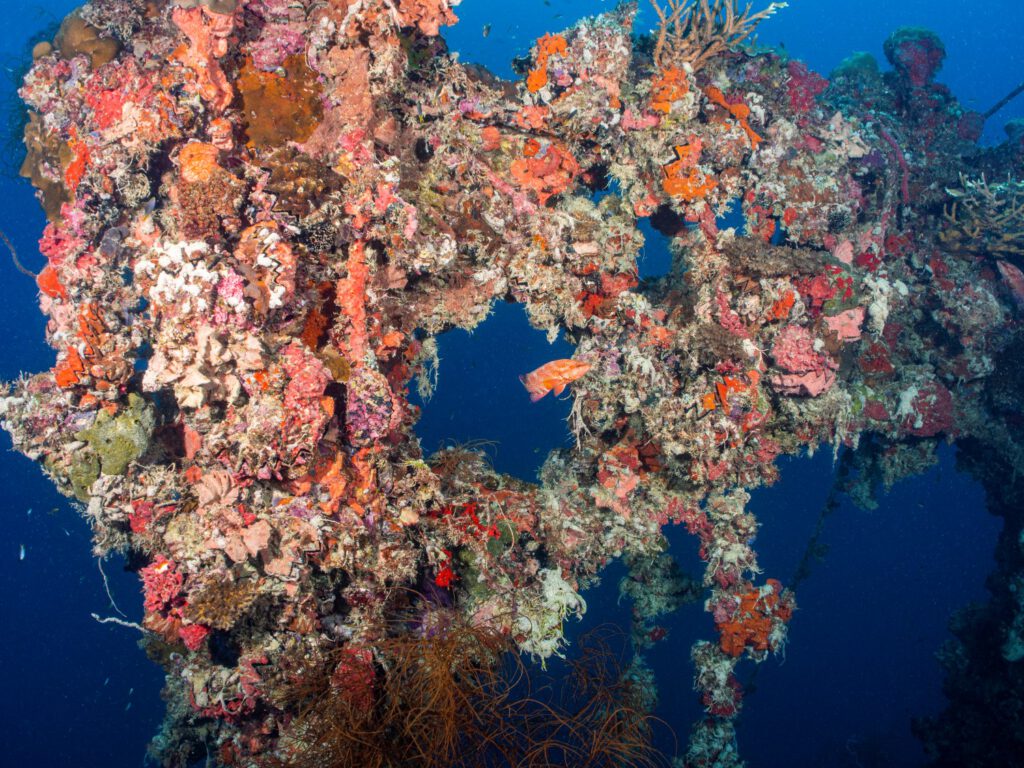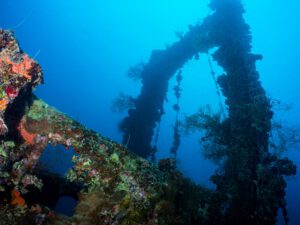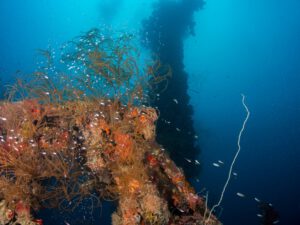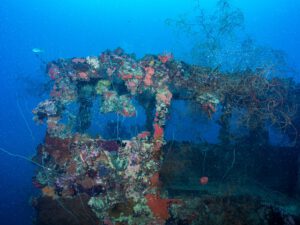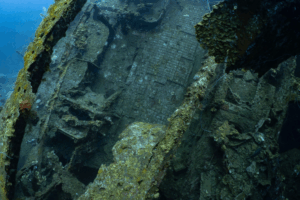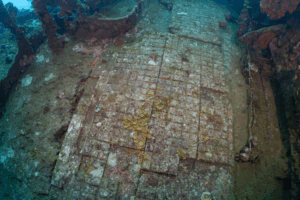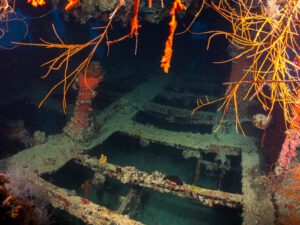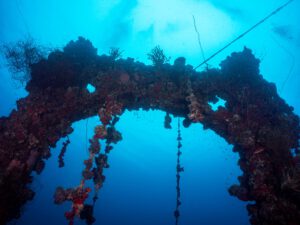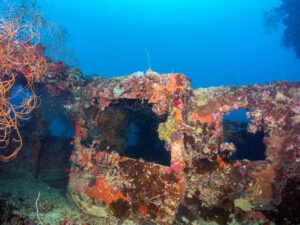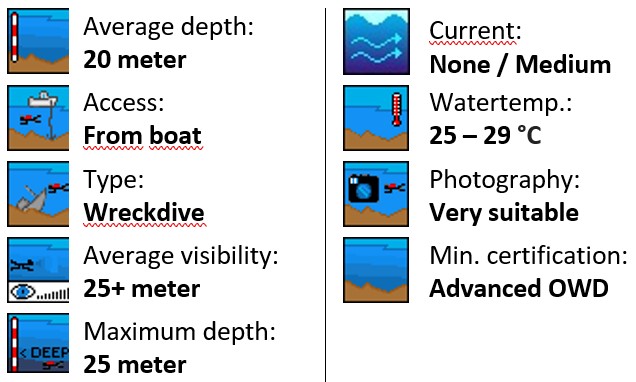IJN Teshio Maru - Palau - Micronesia
Lying just off one of Palau’s natural channels, the Teshio Maru is a beautifully intact and lesser-known Japanese freighter that rewards divers with open structure, vivid marine life, and a sense of quiet grandeur.
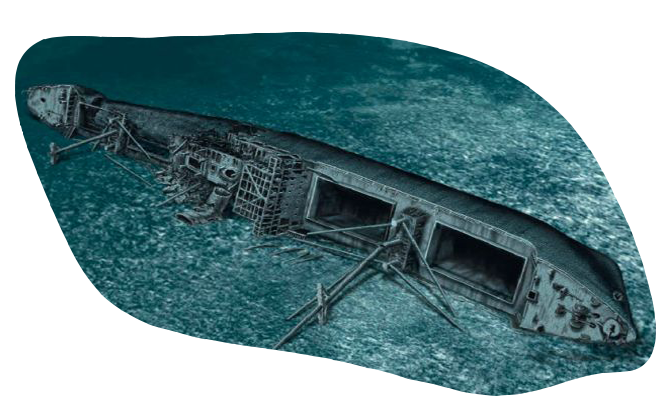
IJN Teshio Maru - Palau - Micronesia
The Teshio is another converted Japanese merchant marine ship that sank during Operation Desecrate One.
This 114-meter cargo vessel was part of Japan’s wartime logistics fleet and met her end like so many others during Operation Desecrate One.
She now rests at a depth of 10 to 30 meters, making her one of Palau’s most approachable wreck dives, especially for those who want extended bottom time without pushing into technical limits.
Teshio Maru is the kind of wreck that sneaks up on you. At first glance, it seems straightforward—but the more you explore, the more you discover.
It’s a wreck that rewards curiosity, and one that’s perfect for slow, thoughtful dives.
The story & the dive
The data
- Name: TESHIO MARU
- Builder: Mitsubishi Zosen K.K. Hikoshima Zosensho shipyard
- Date Completed: 3 June 1930
- Launched: 9 August 1930
- Owner: Kyodo Gyogyo K.K.
- Dimensions: 98 x 13,7 meter
- Propulsion: One diesel engine, one shaft, 470 shp.
- Registered at Shimonoseki with Gross registered Tonnage (GRT) 2,840 tons.
- Sank: 25 March 1945
- Current location: N7 24.427 E134 24.427
The history

Location of the wreck close to Nikko Bay
(Click to enlarge)
The Japanese had detected signs of the attack and started to move and escort freighters and other ships out of Koror. Some F6F Hellcats that were out on patrol detected the convoy and attacked it. Shortly thereafter, SBD Dauntless dive-bombers, TBF Avengers torpedo-bombers and SB2C Helldiver aircrafts continued the attack. The ships tried to retreat but they were in a channel and we had air-dropped mines to block their escape.
The IJA cargo ship Teshio Maru attempted to leave the western lagoon, heading north into the Toachel Mlengui Passage of Palau in a large convoy early on 30 March 1944 in advance of an anticipated U.S. carrier strike against the great Japanese naval and air base.
Before it could make good its escape through West Pass, the convoy was attacked by U.S. Task force 58 carrier dive bombers and torpedo bombers as it made its way north up the shipping channel that runs up the west side of the island of Babelthuap.
The Japanese had detected signs of the attack and started to move and escort freighters and other ships out of Koror. The ships tried to retreat but they were in a channel where they had air-dropped mines to block their escape.
The Teshio turned around and started to head back south towards the main channel in hopes of reaching Koror.
Report Operation Desecrate One:
25 March 1945:
E of Khota Andaman, about 135 nautical miles SE of Port Blair. At 10:30, the convoy is intercepted by Captain (later Admiral Sir) Manley L. Power’s 26th Destroyer Flotilla consisting of destroyers HMS SAUMAREZ, HMS VIRAGO, HMS VIGILANT and HMS VOLAGE.
At 10:59, the destroyers open fire on the convoy with gunfire and launch eight torpedoes, all of which miss.
The undamaged convoy makes for the southwest.
At 11:29, Captain Powers radios for air support.
Two RAF Consolidated B-24 “Liberator” bombers soon arrive and in a low-level bombing attack sink TESHIO MARU at 11-00N, 95-50E, about 178 nautical miles SSE of Port Blair.
One bomb went through the roof of the stern castle directly into the steering flat and crippled her steering gear.
Another blew in the starboard shell plating of Hold No 1.
11 of the crew are killed.
Unnavigable, she drifted onto a nearby reef.
After the war she was partially salvaged while on the reef. After a period of time, she slipped off the reef and sank parallel to the coral slope coming to rest on her starboard side.
One B-24 is caught in the blast of its own bombs and crashes into the sea, the HMS Saumarez rescues the B-24’s crew.
The dive
This wreck is one of the few that is to be found outside the scattered islands of Palau, and away from the poorer visibility of those areas.
She lies in an area of open sea with usually exceptional visibility large portions of her hulk can be viewed at a time.
There are two large holds towards the bow from the superstructure which is slightly aft of amidships and two holds near the aft. She had a coal-fired triple expansion steam engine.
You can see the massive hole on the port side near the superstructure where they used explosives to open it up to salvage parts from the engine room.
What makes the Teshio Maru so enjoyable is how open and well-preserved her structure is.
She sits upright, slightly canted to port, with her bow facing out toward deeper water and her stern nestled into a sand slope closer to the reef wall.
Diving from the bow, you’re immediately greeted by an impressive deck gun, still mounted and surrounded by coral. The forward cargo holds are wide open—ideal for safe, natural light exploration.
You can still see a small gun and two anchors still in stow mounted on the bow.
Pipes, valves, and railings remain in place, offering fascinating photo ops and texture everywhere you look.
As you drift toward midship, you’ll pass cranes, hatches, and engine components, many overtaken by soft corals. Penetration is possible through open hatches and broken hull panels, though most divers enjoy circling the exterior and taking in the full silhouette.
A Living Reef with a Front-Row Seat to the Channel
The Teshio Maru wreck is an excellent site for underwater photography, with the lighting, corals, and marine life making it a photographer’s dream. Whether you are a seasoned wreck diver or a beginner, the Teshio Maru wreck is a must-see dive site in Palau.
Currents are usually none to moderate, making this site accessible to divers of all levels of experience.
Words of Caution:
Although the Teshio Maru has come to rest lying on a coral slope with a sandy bottom, it is not advised to penetrate this wreck because the structures are very unstable.
And like most other ship and plane wrecks found in Palau waters live ammunition may still be present today.
Picking of live ammunition can be extremely dangerous due to their age and volatility; they can explode or leech unsafe products if disturbed.
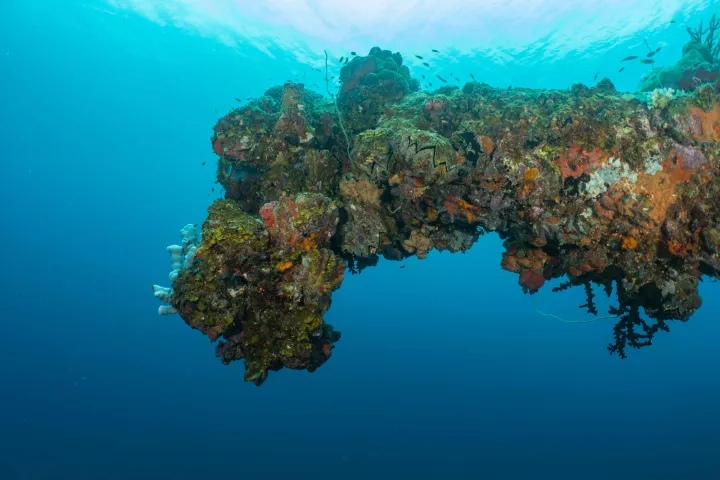
Coral and scallops encrusted onto the wreck
The following pictures were taken by Brett Eldridge during our joint dive on the Teshio Maru in 2022
Flora & Fauna
The reef formation surrounding the Teshio Maru wreck is a coral slope with a sandy bottom, providing a stunning backdrop for the ship’s wreckage. The wreck is covered in staghorn corals, plate corals, whip corals, and black corals, creating an impressive and unique underwater landscape.
Marine life is abundant around the wreck, with barracudas, jacks, groupers, fusiliers, anthias, and other reef fish thriving in the area.
Thanks to its proximity to the channel, the Teshio Maru is blessed with regular water movement, which brings nutrients, corals, and pelagic life.
It also means the site is constantly shifting in visibility and marine energy. Slack tide is the best time to dive here, but even during light current windows, the dive remains enjoyable.
The blend of reef species and open-water visitors makes this one of the more biologically dynamic wreck sites in the region.
The wreck is covered in a variety of soft corals, staghorn and plate corals, sponges and clams.
Large schools of glassfish also make their home in the wreck.
Multicolored corals, sponges and shells that blanket the structure, it’s also covered with a multitude of stony staghorn corals, colorful plate corals, and soft black and whip corals.
Marine life here includes:
- Butterflyfish, sergeant majors, and angelfish darting along the deck
- Lionfish, nudibranchs, and pipefish sheltering in shaded areas
- Reef sharks, barracuda, and jacks occasionally cruise by from the nearby drop-off
- And an ever-changing mix of macro life tucked among the corals and wreckage
Dive Conditions and Tips
- Depth: 10–30 meters
- Visibility: 10–25 meters (best on incoming tide)
- Current: Can be moderate—plan for slack tide
- Skill Level: Suitable for intermediate to advanced divers
- Recommended: Bring a dive light for inspecting compartments and coral shelves
- Photo Tip: Use natural light around midship for soft coral textures; great for wide-angle lenses
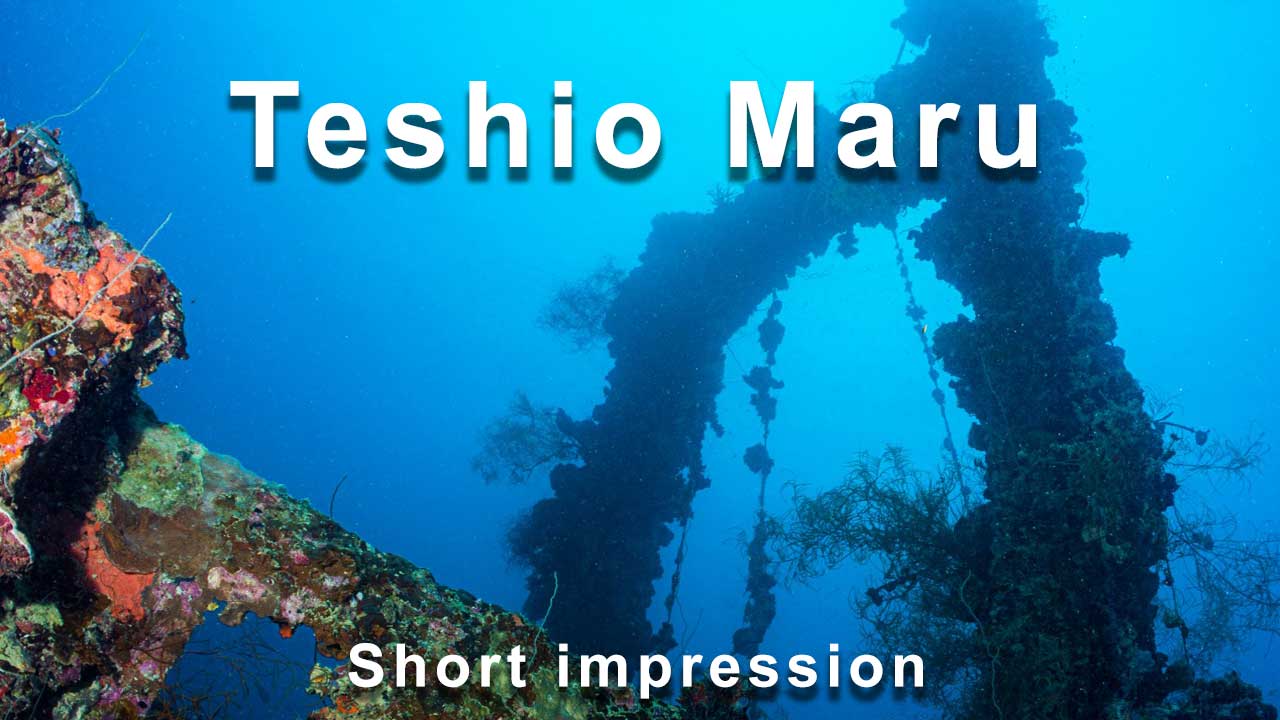
Short impression of the SS Numidia
(Click to play)
Conclusion
The Teshio Maru wreck is a fascinating piece of WWII history, and diving it allows visitors to explore a part of Palau’s rich cultural heritage. The wreck’s size, of 98 meters in length and 2,820 tons in weight, is awe-inspiring, and it is easy to imagine what life was like aboard the cargo ship before its sinking.
Overall, the Teshio Maru wreck dive is a unique and thrilling experience that offers a glimpse into Palau’s history and marine life.


